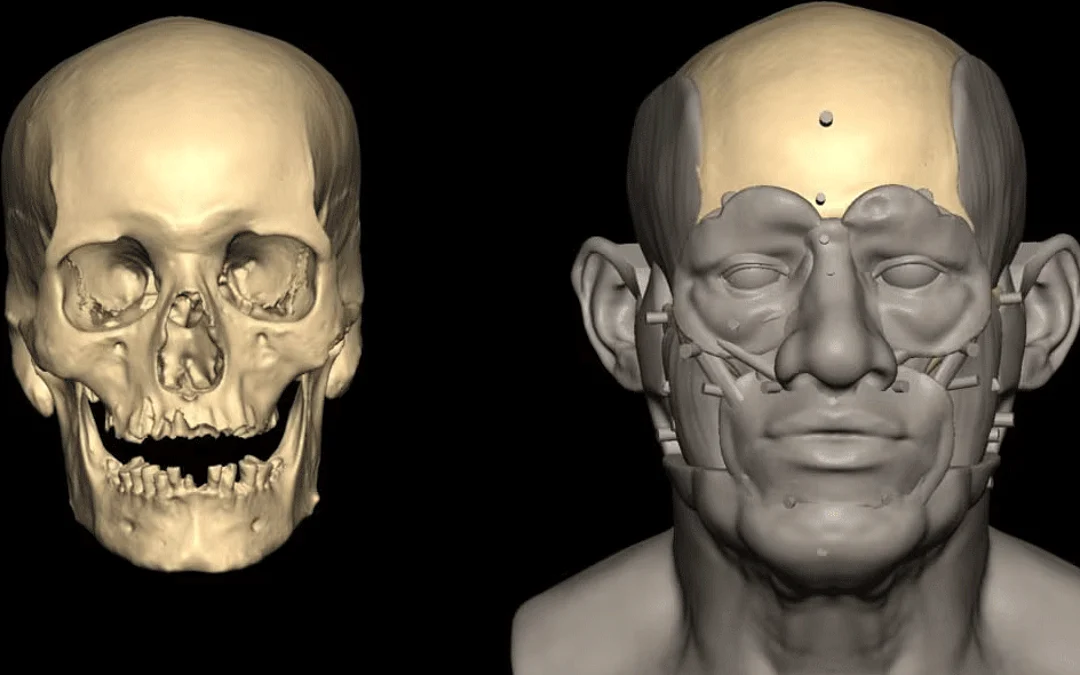By Stephen N R
Dubai: In a major scientific milestone, researchers have sequenced the entire genome of an ancient Egyptian individual, revealing unprecedented insights into the ancestry of a man who lived during the era when Egypt’s first pyramids were being built.The man’s remains were found buried in a sealed ceramic funerary pot in Nuwayrat, a village more than 150 miles south of Cairo. His body was carefully positioned with knees curled to his chin and lay undisturbed for thousands of years, according to a report in CNN. .UAE: Whole-genome sequencing of ghaf tree unveiled at Arab Health 2024.Excavated in 1902 by British archaeologists from a tomb carved into a limestone hillside, the individual likely lived between 4,500 and 4,800 years ago, placing him in the late Early Dynastic to early Old Kingdom periods — the era that saw the rise of the “Age of the Pyramids,” including the Great Pyramid of Giza.Unlike the monumental legacies of the pharaohs, this man, believed to have been a potter, left behind a different kind of legacy: his exceptionally well-preserved DNA. .What is genome sequencing?Genome sequencing is a process scientists use to read the complete set of DNA in an organism. It tells us the exact order of the chemical building blocks that make up all the genes.How do they do it?They extract DNA from cells (like from a tooth or bone), then use advanced machines to “read” millions of tiny pieces of DNA. Computers then piece these fragments back together like a giant puzzle to reveal the full genetic code.Remarkably, despite centuries of harsh Egyptian heat and even surviving Nazi bombings while housed in Liverpool, England during World War II, scientists were able to extract intact DNA from one of his teeth. .This breakthrough allowed sequencing of the oldest complete ancient Egyptian genome to date, radiocarbon dated between 2855 and 2570 B.C.“There are hundreds, if not thousands, of ancient genomes from around the world,” explained Linus Girdland-Flink, a biomolecular archaeologist at the University of Aberdeen and co-corresponding author of the study published in Nature.. “Yet Egypt has remained a kind of white spot on the map of this big puzzle of human genetic ancestry.” Previous efforts recovered only partial DNA from later mummies dated between 787 and 23 B.C., but this new genome comes from someone who lived roughly 1,500 years earlier..What is genetic analysis?Genetic analysis means studying the DNA to learn about a person’s ancestry, traits, or health.How do they do it?Scientists compare the DNA sequences to those from other ancient or modern populations. By spotting similarities and differences, they figure out where ancestors might have come from and how populations mixed over time.Genetic analysis revealed that about 80 per cent of the man’s ancestry traces back to Neolithic populations in North Africa, with the remaining 20% linked to ancient peoples from West Asia, including Mesopotamia and the eastern Fertile Crescent. Interestingly, researchers found no evidence of East African or sub-Saharan African ancestry in this individual, according to Nature. The mixing of these ancestries likely occurred over hundreds or thousands of years, reflecting long-standing cultural and population exchanges supported by archaeological evidence of trade in goods, animals, and technologies such as writing systems and pottery wheels..What is radiocarbon dating?Radiocarbon dating is a method used to find out how old something is, based on measuring the decay of a special form of carbon in organic materials like bones or wood.How do they do it?Scientists measure the tiny amount of radioactive carbon left in the sample and calculate how long it’s been since the organism died.Dr. Adeline Morez Jacobs, lead author and biological anthropologist at Liverpool John Moores University, noted that this genome provides the first genetic insights into an Old Kingdom Egyptian individual, deepening our understanding of population movements and interactions in ancient Egypt. Daniel Antoine, head of the Egypt and Sudan department at the British Museum, who peer-reviewed the research, called the discovery highly significant given how rare ancient DNA survival is in the Nile Valley.Alongside genetic sequencing, the team created a facial reconstruction using forensic techniques. What is facial reconstruction?Facial reconstruction is a technique to recreate what a person’s face might have looked like based on their skull.How do they do it?Experts scan the skull in 3D, then use knowledge of anatomy and genetics (like likely eye color or skin tone) to build a lifelike image of the face.Would you like me to write more like this or tailor them for a specific audience (kids, general public, students)?Based on a 3D scan of the skull and genetic data, the man likely had brown eyes, brown hair, and skin pigmentation ranging from dark to black. To avoid controversy and speculation about uncertain features, the reconstruction was presented in grayscale without hair or skin tone. Caroline Wilkinson, who led the reconstruction, emphasized that this depiction represents only one individual and should not be taken as representative of all ancient Egyptians.Beyond genetics, scientists studied the man’s skeleton to learn about his life, National Geographic said. Signs of worn teeth and age-related arthritis indicated he was likely between 44 and 64 years old at death and had endured physically demanding labour. Muscle strain patterns suggested frequent squatting and leaning, consistent with pottery work. Joel Irish, bioarchaeologist and co-author, humorously noted, “he was looking down a lot during his lifetime, like teenagers look at their cell phones today.” While it remains speculative whether he helped build the pyramids, the evidence points toward a craftsman’s life in ancient Egypt’s thriving society.Researchers emphasize that while this genome is a vital piece of the puzzle, much work remains to fully understand Egypt’s genetic history. Collaborative efforts with Egyptian scientists, including those involved in Egypt’s national genome project, promise to unlock further secrets of this ancient civilization — a true melting pot of the old world.
